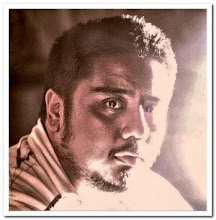From the notes of Ahmad Faiz Zainuddin in Facebook
"For the last 60 years psychology has concentrated on negative issues (depression, phobia, trauma, Schizophrenia & other psychological illnesses = victimology & pathology). Maybe psychology wants to follow in the footsteps of modern medical knowledge that has focused on illnesses for the last 200 years.
What has been achieved in the last 60 years (according to the former President of the American Psychological Association: Martin Seligman): 14 types of psychological illness can be cured (but not totally healed) and 2 types of psychological illnesses can be totally healed. Therefore the furthest achievement of negative psychology is bringing the afflicted from being miserable to less miserable, or, at the apex of achievement, curing a psychologically ill person to a healthy state (from negative to Zero level).
Therefore, a question arises – What about the healthy? Could Psychology help psychologically healthy people to become happier and achieve more in life? The answer is no, until a new branch of knowledge was founded – Positive Psychology, by Prof. Martin Seligman, who was just elected as the President of American Psychological Association, in 1998.
According to Prof. Seligman, there are 3 ways to happiness
1. Having a Pleasant Life (life of enjoyment): Have a life that is full of enjoyment and getting as much gratification as possible. This may be the life of hedonists. However, should one choose this path, be careful of the trap called the hedonic treadmill (the more we seek enjoyment, the harder it is to get gratification) and another called habituation (the sensation of having experienced something too many times, i.e.; eating ice cream, at the first bite we would get maximum gratification, but at the twentieth we could feel nausea). However, at the right measurements, this path could be very gratifying; with the reward of happiness.
2. Having a Good Life (life of engagement): in Aristotle’s words called eudemonia, getting involved in labour, relationship of activity that makes us experience “flow”. Being absorbed in that activity, one can feel that time slows down; one even feels nothing due to the intense concentration to that activity. This phenomenon was researched specifically by Seligman’s colleague, Mihaly Csikzentmihayli; and it gives us 7 criteria in “flow” condition:
a. Totally absorbed in what we are doing (focused, concentrated, khusyu’)
b. Feeling a sense of ecstasy (as if being beyond daily reality)
c. Having total clarity (truly understanding what has to be done and how to do it)
d. Realizing that obstacles in what we are doing can be overcome (we have the skills and aptitude to do it)
e. Feeling content (no worries and feeling that we are advancing beyond our own ego)
f. Absorbed in time (because of total concentration and focus to here and now, time moves without us feeling it)
g. Intrinsic Motivation (feeling the “flow” in itself is rewarding enough to do the activity)
3. Having A Meaningful Life (life of Contribution): To have the spirit of serving, contributing and being useful to others. Being a part of an organization or group, tradition or movement. Feeling that life contains a higher and eternal meaning than us.
These three points become the focus for positive psychology research – How to live a meaningful life, work that makes flow and activities that give gratification. In the words of a pioneer in positive psychology in Monash University
Which makes you happiest? The process of baking a cake, eating the cake, or giving a cake to your neighbours?"
0 Comments:
Subscribe to:
Post Comments (Atom)
